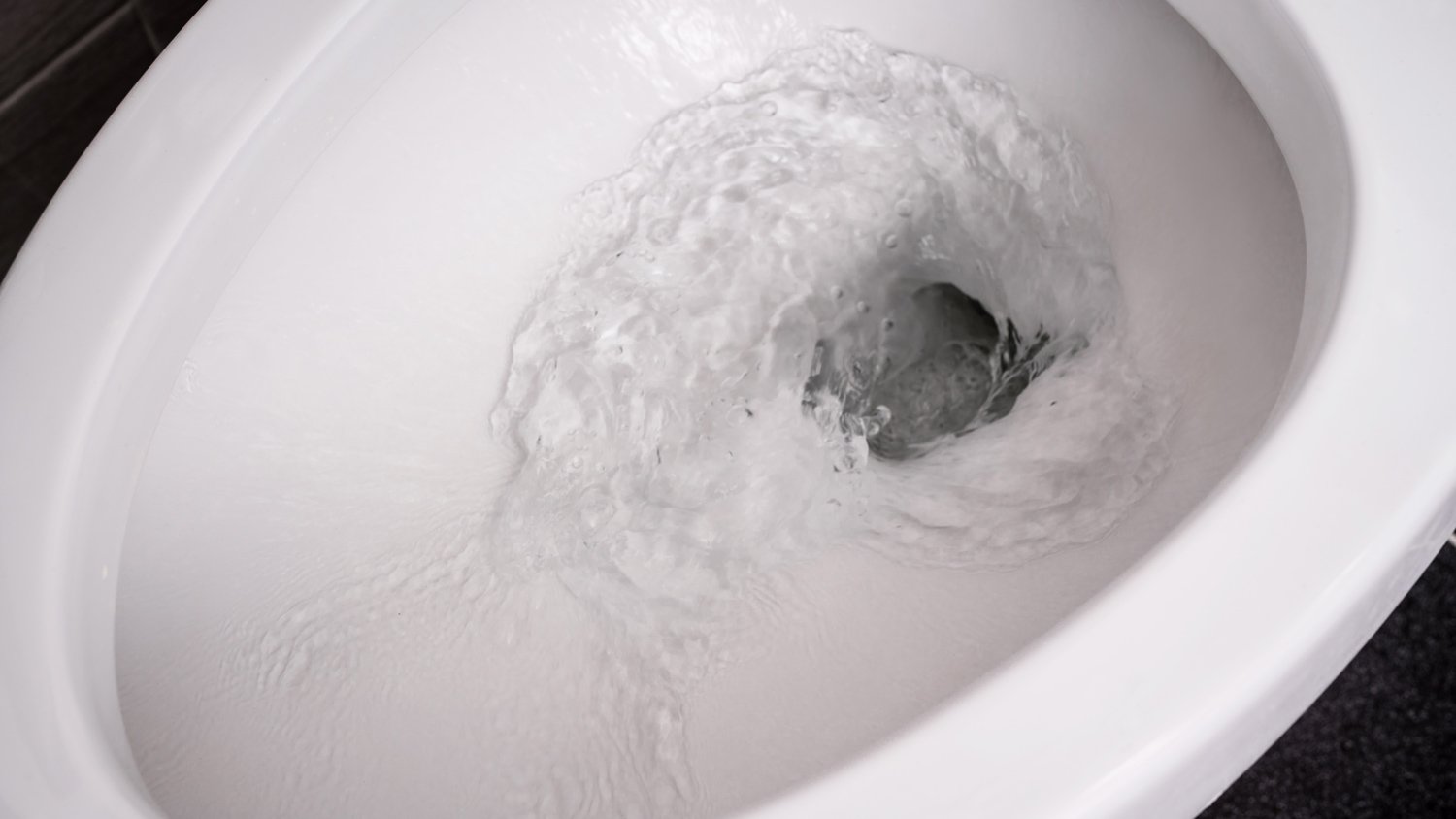
The average propane tank costs between $600 and $2,500, depending on the size, location, and more. Our expert guide explores all the factors.
Have an older toilet? It may use 2 to 5 times more water per flush!


Modern toilets use 1.6 gallons of water per flush.
Toilets installed before 1992 may use up to 7 gallons of water per flush.
Toilets use the most water in a household.
A new toilet costs $375 to $500 on average.
Did you know your toilets use the most water in your household? If you want to cut down your water bill, it’s crucial to know how much water your toilet uses per flush and try to reduce that consumption.
According to current EPA standards, it takes 1.6 gallons to flush the toilet, although newer toilet models may only use 1.28 gallons. The current standards were published in 1992. Therefore, toilets installed before 1992 often have a much higher GPF number.
How much higher, exactly?
Toilets manufactured between 1982 and 1992 generally used around 3.5 gallons per flush. However, toilets manufactured before 1982 may use anywhere from five to seven gallons per flush.
According to an index published by Flume in 2021, American households' average toilet flush volume was 2.2 gallons per flush based on data collected from over 5.9 million flushes across tens of thousands of households. On average, a household flushes their toilets 5.5 times per person daily.
Your toilet’s water consumption per flush is indicated by the Gallon-Per-Flush (GPF) index. This number is usually located on the water tank's back wall, behind the seat, or inside your tank lid. A dual flush toilet will have two GPF numbers indicating the water consumption of each mode.
If you can’t find the GPF index, try to identify when your toilet was manufactured. The manufacturing year is usually found on your water tank's back or inside the lid. Generally, older toilets use more water per flush.
Your toilet’s model and type may significantly impact the amount of water used per flush. Therefore, it’s crucial to choose the right toilet for your home.
Older models with a traditional flushing method use the most water per flush. Meanwhile, energy-efficient toilets manufactured in recent years tend to have a much lower GPF. For example, dual-flush toilets have a milder flush option using less water and a regular flush option with a slightly higher GPF.
Other water-saving toilets include vacuum-assisted flush toilets, low-flow toilets, gravity-assisted toilets, pressure-assisted toilets, and composting toilets.
Dual-flush toilets have a lower GPF flush option that uses as little as 0.8 GPF. So long you consciously use the lower flush option, you can significantly reduce the water used for flushing.
On the other hand, the regular flush option still has a lower GPF compared to non-water-saving models or older toilets. The standard flush on a dual-flush toilet usually has a GPF slightly lower than 1.6.

If replacing your current toilet is not an option, here are a few useful hacks to reduce water used per flush.
You can put a brick or plastic bottle filled with water in your toilet’s tank. This reduces the total amount of water your tank holds and, therefore, reduces how much water is used for flushing. If you’re unsure what size brick and water bottle to use or are concerned about the brick dissolving over time, consider installing a toilet tank bag.
Another quick fix is to install an adjustable flapper. As the name indicates, these flappers allow you to control how much water flows into the toilet when flushed. An adjustable flapper installed into an old toilet can save up to three gallons of water per flush.
The toilet bowl fills up faster than the tank, yet the valve doesn’t shut off until the tank is full. This means additional water continues to flow into the bowl and straight down the drain until the tank is filled. By installing a fill cycle diverter, you can feed the extra water back into the tank once the bowl is full. A fill cycle diverter can save a half-gallon or more per fill.
Finally, make sure your toilet is not leaking. Leaks often happen on the tank, the toilet bowl, at the bottom where your toilet connects to the floor, or around the bolts. Depending on the severity of the leak, you may need to replace your toilet.
While the above methods can help you reduce water used per flush, it’s best to upgrade to a new toilet if you are using something more than 20 years old. We highly recommend you replace your toilet if it was made before 1992.
A new toilet costs $375 to $500 on average, although some higher-end models can cost $2,000 or more. Toilet installation costs $224 to $533, depending on location, materials, size, and type. Generally, it’s cheaper to upgrade your toilet than installing a toilet into a new bathroom.
From average costs to expert advice, get all the answers you need to get your job done.

The average propane tank costs between $600 and $2,500, depending on the size, location, and more. Our expert guide explores all the factors.

A burst pipe is a homeowner’s worst nightmare—but you can get ahead of the potential expense. This guide will help you budget for burst pipe repair costs.

We’ll cover the cost of replacing a shower or bathtub drain, whether you can tackle this repair yourself, and what other projects to consider along the way.

Most homeowners will eventually need to replace bathroom hardware. This guide breaks down bathtub faucet installation costs, so you can upgrade your bathroom.

Accidents can cause your sewer pipe cap to break. While fixing it is essential, don’t jump right in. This guide will prepare you with must-know tips.

If your faucet hasn’t been working like it used to, you might need a replacement. Here’s how to replace a kitchen faucet like a plumbing pro.